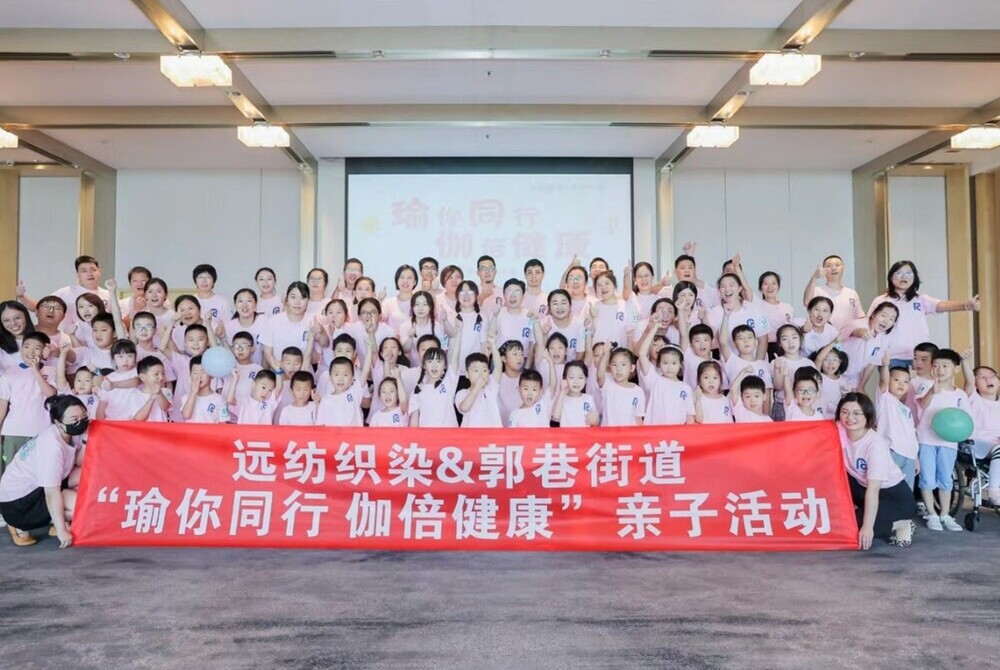Employee Care
FENC attracts top talents with competitive compensation package; retains high-performing employees with extensive remuneration system.
FENC regards employee health and welfare as its priority. While engaging employees through advanced hardware and equipment, the Company also supports them with a safe and friendly workplace as well as robust remuneration and welfare policies, helping them thrive for the long term.
FENC adheres to the principle of equal remuneration, committing to providing a remuneration system that is fair and reasonable. The salary structure consists of the base salary, performance bonus and year-end bonus supplemented with a comprehensive welfare system. With a performance-based remuneration system, employees’ compensation is closely associated with the individual and team performance. Meanwhile, the environmental, social and governance (ESG) aspects and the sustainable development goals have also been incorporated into the performance review indicators to motivate employees to strive for environmental protection, social responsibility and corporate governance while pursuing business growth.
Compensation
An analysis of the salary level across FENC production sites indicates competitiveness in the salaries FENC offers in Taiwan, mainland China, Vietnam and the U.S., while the salary level at FENC sites in Japan remains on par with the market rate. The main factor is the hiring of more first-time job seekers at FIGP–Himeji Plant after its expansion. The remuneration policy at each FENC site is established based on local regulations and market conditions. Regular market salary surveys are conducted with adjustments made to remain competitive and create a working environment that is friendly and appealing.
The employee performance management appraisals is conducted annually. Based on the business operation as well as employee performance and competency, adjustments are made to salaries, bonuses and promotions. The review mechanism serves to inspire employee dedication and create a win-win by increasing both personal earnings as well as corporate growth.
Details regarding the average and median salaries of non-management full-time employees at FENC, as well as the year-over-year changes are available on the ESG Digital Platform of the Taiwan Stock Exchange Corporation’s Market Observation Post System.
Salary Comparison to Market Level in 2024
| Average Annual Regular | Entry-Level Salary over Minimum Wage | ||
Male | Female | |||
Taiwan | 2021 | 43% | 140% | 21% |
2022 | 45% | 21% | 21% | |
2023 | 46% | 16% | 16% | |
2024 | 50% | 14% | 14% | |
Mainland China | 2021 | 86% | 140% | 113% |
2022 | 65% | 128% | 111% | |
2023 | 60% | 131% | 117% | |
2024 | 46% | 112% | 109% | |
Vietnam | 2021 | 44% | 12% | 12% |
2022 | 44% | 12% | 12% | |
2023 | 40% | 12% | 12% | |
2024 | 50% | 10% | 10% | |
Japan | 2021 | 14% | 168% | 128% |
2022 | 35% | 205% | 168% | |
2023 | 31% | 186% | 167% | |
2024 | 1% | 9% | 9% | |
U.S. | 2021 | 26% | 146% | 146% |
2022 | 57% | 134% | 134% | |
2023 | 59% | 120% | 120% | |
2024 | 41% | 147% | 147% | |
| ote: The data sources for market rates of salaries across FENC’s global locations include: the average salary in the manufacturing industry and the minimum wages published by the Directorate-General of Budget, Accounting and Statistics of Executive Yuan in Taiwan; the average wages published by the National Bureau of Statistics of China and the minimum wages published by Shanghai and Suzhou People’s Municipal Governments in mainland China; the average wages published by the General Statistics Office of Vietnam and the minimum wages among tier-one cities in Vietnam; the regional minimum salary determined by the Ministry of Health, Labor and Welfare and the Statistical Survey of Actual Status for Salary in the Private Sector by the National Tax Agency in Japan; the United States Census Bureau for the U.S. locations. Data comparison is conducted based on statistics from the current year. |
Ratio of Salary and Salary Increase Between the Highest Salary and Median Salary in 2024
The Highest Individual Salary : Median Salary of Other Employees | Salary Ratio | Salary Increase Ratio | |
Taiwan | 2021 | 7:48:1 | 1.02:1 |
2022 | 7.38:1 | 0.78:1 | |
2023 | 7.18:1 | 0.43:1 | |
2024 | 6.88:1 | 0.68:1 | |
Mainland China | 2021 | 5.15:1 | 2.04:1 |
2022 | 5.09:1 | 1.42:1 | |
2023 | 5.01:1 | -- | |
2024 | 5.25:1 | -- | |
Vietnam | 2021 | 8.35:1 | 1.14:1 |
2022 | 7.00:1 | 1.11:1 | |
2023 | 9.47:1 | -- | |
2024 | 9.57:1 | 1.19:1 | |
Japan | 2021 | 2.38:1 | -- |
2022 | 1.54:1 | -- | |
2023 | 1.53:1 | -- | |
2024 | 3.44:1 | -- | |
U.S. | 2021 | 2.16:1 | 1.07:1 |
2022 | 2.40:1 | 2.22:1 | |
2023 | 3.50:1 | 2.18:1 | |
2024 | 3.60:1 | 1.09:1 | |
| Note: 1. The disclosed data from production sites in Taiwan, mainland China, Vietnam, Japan, and the U.S. represent the average values from sites where salary adjustments were made during the reporting year. 2. The salary ratio is the ratio of the annual total salary for the organization’s highest-paid individual to the median annual total salary for all employees. 3. The annual salary increase ratio is the ratio of the percentage increase in annual total salary for the organization’s highest-paid individual to the median percentage increase in annual total salary for all employees (excluding the highest-paid individual). 4. “-“ indicates no salary adjustment. |
Performance Review and Incentive Systems
FENC has a robust performance management and incentive system in place, including a holistic ESG performance review framework that links ESG indicators directly with employee remuneration as substantial encouragement to motivate employees.
The remuneration policy for the Board members and managers is discussed during the Remuneration Committee meeting, which is convened by the independent Board members. The discussions are presented for Board approval and results are presented at the shareholder meeting. Please refer to Board Structure and Remuneration for details.
Compensation for executive levels above assistant vice president is based on corporate performance and the market average. In addition, the compensation is adjusted based on performance appraisal and factors in future operational risks. The Company does not offer signing or recruitment bonus for senior managers. Considerations for compensation of other employees include overall corporate and departmental performance; pay rates among listed companies; market survey provided by professional consulting firms; overall financial and management risks. Stock options are not available for regular employees, and the Company policy does not include deferred or vested share options.
Performance Management Appraisals for Senior Managers
Performance management appraisals for senior managers is 70% quantitative, which is based on revenue analysis, and 30% qualitative, which is based on long-term development. The review is tied to adjustments in salary and annual bonus.
Performance Review Components for Senior Managers
.png)
Manager and Employee Performance Review System
Competency assessments, such as the behavioral assessment conducted annually at FENC, and additional evaluation tools are used as the means to appraise managers’ work attitudes and management capabilities, as well as the basis for development programs. The assessment covers seven indicators for leadership potential, including business acumen, risk-taking, perspective-taking, holistic thinking, propensity to lead, learning agility and passion for results, as well as seven indicators for leadership competency, which are communication, collaboration, logical thinking, execution, leadership, digital savviness and agility. The results are referenced for talent development, such as training, capacity building, job rotation and promotion.
FENC has a clear set of rules and regulations governing the performance review process to help employees excel in capabilities and performance. The review policy has also been established based on corporate and personal performance with transparency assured. ESG performance, which ranges from energy conservation, promotion of green business, R&D of green products, implementation of corporate governance and optimization of human resources, has been incorporated into the performance review. FENC provides a performance-driven bonus system to incentivize top-performing employees and senior executives. The performance review system covers 100% of permanent employees and does not include part-time employees and employees under one year of employment. The 2024 performance review reached a 100% completion rate among permanent employees.
At least once a year, FENC conducts the employee performance review, which encompasses managerial feedback, peer feedback and self-assessment. During performance interviews, employees are informed of career development opportunities and the outcome of the year-end performance review, which is taken into consideration for promotion and salary adjustments with an approximate range between 0% to 5% of the employee salary. Upon reviewing employee performance and competency, managers make the determination for salary adjustments, bonuses, promotion or termination of employment accordingly.
Performance Management Appraisals and Employee Development System
.png)
Performance Management Appraisals for Migrant Workers
Performance management appraisals for migrant workers in Taiwan are determined by their supervisors based on monthly attendance and production of Grade A products. Bonus is awarded based on the results.
Bonus for Team-based Performance Appraisal
To ensure the effectiveness of its sustainable strategies, FENC conducts monthly team-based performance appraisal regarding material ESG topics. Based on the result, production bonuses as much as 20% of the monthly salary are awarded. The management level may earn performance bonuses for advancing the management systems, while for the rank-and-file employees, the bonuses are performance-based. The incentives are designed to encourage ESG practices among all units, including occupational safety, energy and carbon reduction, environmental protection, recycling and production optimization, which advance FENC’s sustainable commitment.
Linkage Between Remuneration and Material ESG Topic
Senior Executive | Management Level | Rank-and-file Employee | |
Business Performance and Strategy | ● |
|
|
Management Performance | ● | ● |
|
Energy and Resource Management | ● | ● | ● |
Environmental Management | ● | ● | ● |
Green Product Revenue | ● | ● | ● |
Occupational Safety and Health | ● | ● | ● |
Wastewater Recycling Bonus |
|
| ● |
Accident-free Bonus |
|
| ● |
Employee Compensation / Profit Sharing
The Company provides long-term incentives for employees below the senior management level. According to the FENC Articles of Incorporation, 2% to 3.5% of profits from the current year should be distributed as employees’ compensation. During a profiting year, all employees without demerits are entitled to this long-term incentive provided through a year-long mechanism.
Employee Stock Ownership Plan (ESOP)
At FENC sites in Taiwan, employees with technical expertise as well as mid-level managers and above may participate in the employee stock ownership plan (ESOP), which purchases Company shares systematically with a 30% contribution from the Company. A trustee manages the shares and calculates the trust property equity. Upon the termination of employment, employees may redeem the investment in the form of stocks or cash. ESOP offers a long-term option for employee bonus and investment returns. In 2024, the number of employees enrolled in ESOP accounted for 95% of those who were qualified, indicating a high interest in participation.
Far Eastern Corporate Spirit Award and Far Eastern Energy Award
Each year, FEG hosts the Far Eastern Corporate Spirit Award and Far Eastern Energy Award to encourage its subsidiaries and affiliates to submit projects, contributions or actions that demonstrate excellence and bring positive influence and motivation to the peers within the group. Exemplary employees are presented with medals and bonuses as acknowledgement.

















